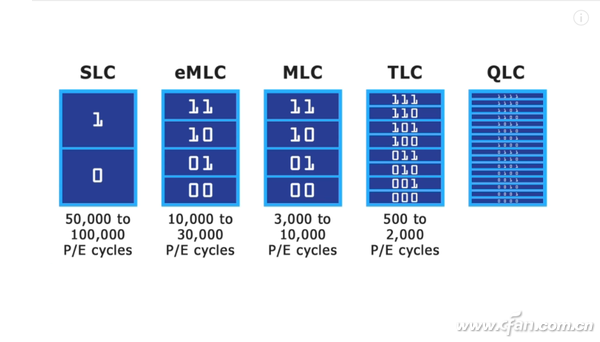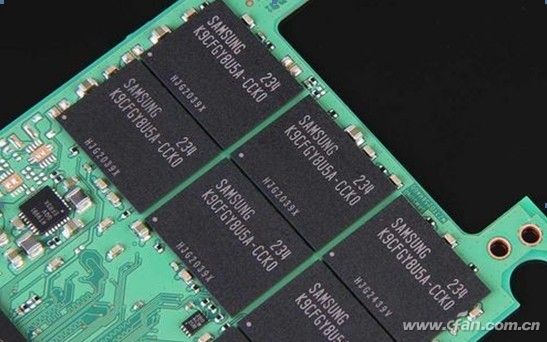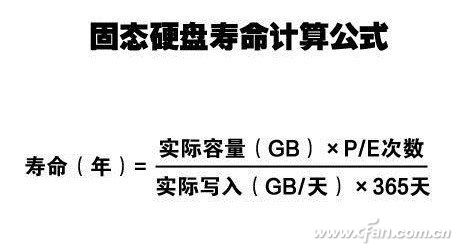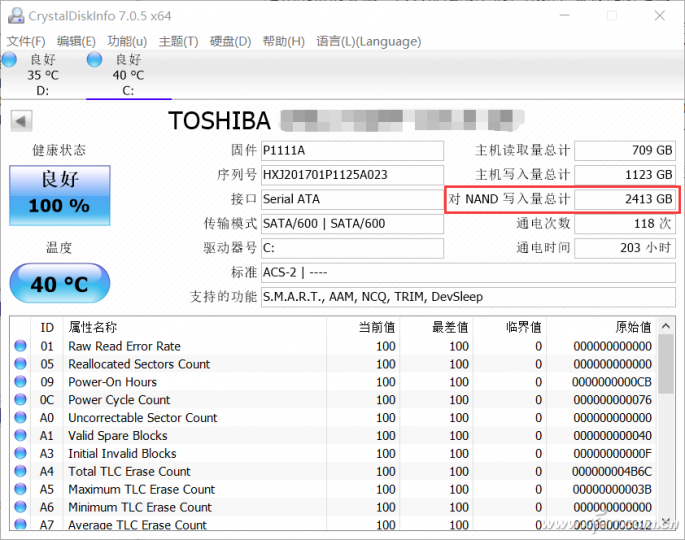There is a big news in these two days. It is a very good place for the status quo of continuous price hikes for solid-state drives. The large-capacity QLC flash memory is coming soon. It is certain that the small partner has asked QLC what? Xiao Bian talks about this matter today, and the key is to talk about the write-in lifetime that everyone is worried about.

How to store SSDs?
It differs from the principle of mechanical hard disks. SSDs use NAND Flash to store data. NAND Flash is composed of one "block" one by one in its physical structure. Each block has a certain erase life (P/E), and when the erase life reaches, the block will be damaged. Do not know if you pay attention to not, now the SSD and mechanical hard drives are different, the capacity is 120GB, 240GB, 480GB, 960GB, rather than 128GB, 256GB, 512GB, 960GB we generally understand. Approximate specification capacity is actually used to verify data and backup redundant "blocks".

Theoretically, TLC flash memory is a flash memory structure (density) designed to support 100TB class SSDs. Of course, this is only theoretical support, and the cost is still not acceptable to ordinary users. Therefore, the emergence of QLCs with higher storage densities is a technological change that further strengthens the capacity of solid state drives. Xiao Bian predicts that when QLC flash SSDs are released, it will be the first step towards universal adoption of real TB (960GB) SSDs (of course, do not imagine that the same amount of mechanical hard disks are used). In addition, in the face of large capacity, the problem of low writing times can be compensated by more redundancy, not to mention the fact that erasure life is nothing to worry about.

How much can SSD write?
According to the type of NAND Flash, the erasure life P/E is also different. Currently, there are three types of NAND Flash: SLC, MLC, and TLC, plus a total of four QLCs to emerge. The three types of flash P/E are SLC 5000-10000 times, MLC 1000-3000 times, and TLC 500-1000 times. How much is QLC? According to the current statement, the flash memory P/E of the QLC structure is only 150 times. What? 150 times, isn't that totally useless? Don't worry. Technology is improving. This is just an initial product of technical verification. Follow-up will certainly improve. Do not forget that P/E was only 500 times when TLC was just listed.

Here, the Xiao Bian will also give everyone a lift of misunderstanding. Many people say that the number of writes is too short and the life expectancy is short, but the concept of this length is really not literally understood 1000 times, 3000 times. Let's take a practical example. Xiaobian's 120GB SSD is TLC. According to the number of P/E writes of 1000 times, the total amount of writes to this hard disk should be 120×1000=120000GB. If it is written every day, Full of 120GB, then his life theory is 2.7 years. Is it feeling very little?

This is where the problem lies. Let's talk about the results. Xiao Bian began using this SSD on January 3 this year. Currently, the total amount of writes for the six-month period (180 days) is 2413 GB, which is equivalent to writing only on average every day. 13.4GB, the distance theory is almost 10 times less than 120GB written every day. The so-called theoretical lifespan of 2.7 years is not meaningless?


Who is the SSD life killer?
Rather than worrying about the amount of writes that will affect the life of SSDs, it's better to worry about the true killer of SSD life—overheating and sudden power failure. Because SSDs use electrical signals to erase written data, sudden power failure is a very serious issue for SSDs. Frequent abrupt power failures may result in data loss, including data that has been written to the memory! This is essentially different from mechanical hard drives. The so-called sudden power outages, such as power outages and hard shutdowns, all fall into the category of power outages.
Another life-time killer is overheated. In fact, solid-state drives are not as heat-resistant as mechanical hard drives. Overheating will greatly shorten the lifespan of flash-memory particles in solid-state drives. This is because electronic chips will produce a phenomenon called electron migration due to overheating. Is to accelerate the aging, resulting in irreversible life damage from the physical structure, if you use high-strength solid-state hard drive for a long time, coupled with heat dissipation work is not in place, it is easy to cause the SSD overheating, on the view of Xiao Bian, which is far more concerned about flash memory The number of erased particles is more worthy of attention.

For the 33kV Oil Immersed Power Transformer, we can produce capacity upto 50MVA. We use the best quality of raw material and advance design software to provide low noise, low losses, low partial discharge and high short-circuit impedance for power transformer.
Our power transformer are widely used in national grid, city grid, rural grid, power plant, industrial and mining enterprise, and petrochemical industry.
Conventer Transformer,33Kv Power Transformer,33Kv Power Transformer With Octc,Power Transformer With Octc
Hangzhou Qiantang River Electric Group Co., Ltd.(QRE) , https://www.qretransformer.com